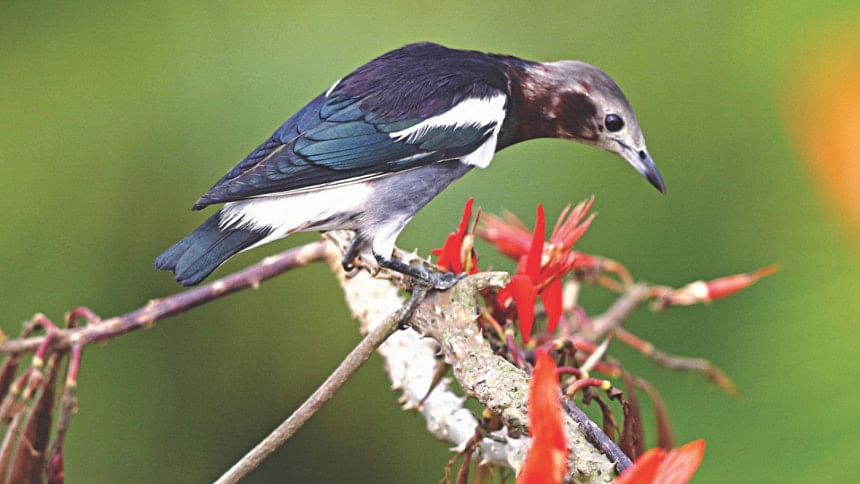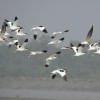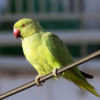New denizen in Bangladesh bird terrain

A few Bangladeshi photographers captured shots of a new species of bird for the first time in the country. It is a Chestnut-cheeked starling that breeds in parts of Japan and nearby Russia.
Most feathered bipeds in Bangladesh are known to us. Once-in-a-blue moon we get new record of a species that has never been seen before in the country. Our current candidate is a bird from Japan and part of Russia, bordering Japan where it breeds but also lives in their neighbouring countries like the Philippines, Taiwan and North Borneo.
This little denizen is a close relative of our Kath Shalik, Bhat Shalik, Bamon Shalik or Chestnut-tailed, Pied and Braminy starlings respectively that are commonly seen in Bangladesh. But none has sighted Chestnut-cheeked or Red-cheeked Starling in Bangladesh other than a few bird photographers who were visiting the famous watchtower in Satchhari National Park under the Habiganj district on March 4.
There is a six-storey concrete tower built by the forest department for the visitors to look around the canopy of the forest. However, there is a Mandar or Coral Tree (Erythrina indica/ovalifolia) by the tower and of almost equal height. The coral red flowers bloom from end of January and the full bloom remains up to the beginning of April, although some maturing into fruits as time passes by. These flowers are laden with honey that attracts birds, bees and butterflies to the Mandar tree. Bangladesh birders flock to the top of the tower in dozens to take brilliant shots of canopy dwelling birds such as the Lotkon or Vernal Hanging Parrot, Bamun Kaththokra or Pygmy Woodpecker, in addition to Hill Myna, several species of starlings/shaliks, Bulbuls, Moutushis or sunbirds, Flowerpeckers, Leaf birds, Orioles, Drongos, etc.
Upon receiving information of this bird sighting from Facebook, I rushed to the Satchhari National Park Watch Tower on March 6 morning when I saw a teacher and his students from the Dhaka University Zoology Department were already camping there from the previous night to get a glimpse of the illusive starling. Next morning, there were 21 birders from Bogra, Chattogram, Dhaka and Rajshahi to take shots of the new starling that might be called Lalchey or Patkile-Kopol Shalik.
Outwardly resembling our Kath shalik, this Lalchey or Patkile-Kopol Shalik has a prominent chestnut or reddish patch on the cheek that may spill over to the neck and throat. There is dazzling purplish hue over the blackish back when head is white or greyish, wings are dark marked with small patches of white, tail blackish-green and rump brownish that might turn whitish in winter. Bills and feet are blackish. It measures just 19cm in length from the tip of the bill to the tip of the tail.
It's a very active bird, flitting from flower to flower, drinking nectar and moving from one flowering tree to the other. It was always found along with the Chestnut-tailed starlings. It often returns to the same Mandar flowers by the watch tower. On March 6, from morning to late afternoon, it was there for four times, the next time it could visit the Mandar tree only for three times as there were too many tourists on the tower, and they were noise makers as all park visitors are.
There is only one record of the Lalchey or Patkile-Kopol Shalik from the Indian Subcontinent which is from Assam in India. It was sighted there on March 28, 2006 in a forest at Nameri National Park (26°56′4′′N 92°51′09′′E), Assam, north-eastern India by Pierre Van Der Wielen, when he was birding there along with Alma Leegwater, Mario Renden, and Rob Struyk. Wielen has reported this information in Oriental Bird Club Journal- Forktail in 2007.
So, Satchhari sighting is the 2nd record of it in Asian mainland.
When a bird or animal naturally lands in a country only once or a few times in a decade or so we call such species as a 'vagrant'.
Patkile-Kopol Shalik is a vagrant to Bangladesh and the newest addition to our avifauna. As more and more people are visiting the field, we are likely to see more new species records in Bangladesh territory and the tempo of visits to the wilderness areas of the country to continue that will add immense wealth of information to our biodiversity.

 For all latest news, follow The Daily Star's Google News channel.
For all latest news, follow The Daily Star's Google News channel. 








Comments